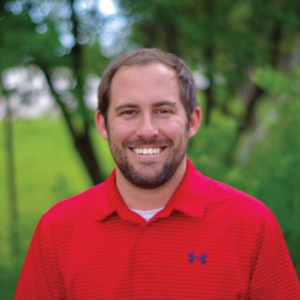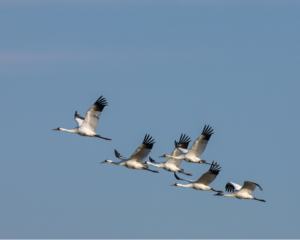Environmental and ecological concerns are always a high priority in the development of water infrastructure projects. In the Platte River basin states of Colorado, Nebraska, and Wyoming, the Platte River Recovery Implementation Program (PRRIP) is ensuring that water providers meet their Endangered Species Act (ESA) compliance obligations by promoting the development and protection of habitat for threatened and endangered native species.
To accomplish this mission, PRRIP has hired Headwaters Corporation, a natural resources management consulting firm that assists clients with water resources planning, permitting, and engineering; biological and ecological sciences; and habitat and land management. With its combination of technical expertise and practical experience, Headwaters produces innovative and sustainable land and water management solutions.
In this interview with Joshua Dill, the managing editor of Irrigation Leader, Kevin Werbylo, a water resources engineer at Headwaters Corporation, discusses his organization and its efforts to preserve and create habitat in the Platte River basin states.
 Joshua Dill: Would you please tell us about your background and how you ended up in your current position?
Joshua Dill: Would you please tell us about your background and how you ended up in your current position?
Kevin Werbylo: I have a master’s degree in civil engineering from Colorado State University. After graduation, I was hired to work for Headwaters Corporation. This small company is the independent entity that implements the PRRIP. I have worked for Headwaters Corporation for about 5 years now, in large part on the Platte River Program.
Joshua Dill: Please tell us about the Headwaters Corporation.
Kevin Werbylo: In 2007, the PRRIP’s governance committee selected Dr. Jerry Kenny to be the executive director of the program. Dr. Kenny formed Headwaters Corporation to serve as the office of the executive director of the PRRIP. We have a staff of 18 people, many of whom work almost entirely on the PRRIP. Headwaters implements the program under the guidance of a governance committee composed of stakeholders from the states, the U.S. Department of the Interior, water users, and environmental organizations.
Joshua Dill: Please tell us about the Platte River Program and what it seeks to accomplish.
Kevin Werbylo: As I mentioned, the PRRIP is an endangered species recovery program, focusing on the whooping crane, least tern, and piping plover, which find habitat in the central Platte, and the pallid sturgeon, which is found in the lower Platte. We help these species by acquiring and managing water and acquiring and restoring habitat in the Central Platte. Of course, we need to ensure that our actions for the birds do not adversely affect the habitat of the pallid sturgeon.
Joshua Dill: What is the upshot for water users and irrigators?
Kevin Werbylo: The PRRIP provides ESA compliance for water-related activities in the Platte basin, upstream of the Loup River confluence. If the program did not exist, water users would need to reinitiate consultations with the U.S. Fish and Wildlife Service for all existing water-related activities that require federal authorization. They would also be required to provide mitigation for water-related impacts at the program’s habitat focus area in central Nebraska. Without the PRRIP, the onus for compliance would fall on individual water users. PRRIP provides mitigation for all existing and new water-related activities.
Joshua Dill: Is that service provided by the three states?
Kevin Werbylo: Yes, the PRRIP provides mitigation for all existing and new water-related activities in the basin. The states have essentially created a framework that provides ESA compliance for their water users in the basin via the program, but each state’s relationship with its water users is unique. For example, ESA compliance for Colorado water users’ new depletions is covered by participation in the South Platte Water Related Activities Program, which assists financially with program implementation.

Joshua Dill: Could you describe the geographic characteristics of the area you work in?
Kevin Werbylo: The habitat that is the focus area of the PRRIP extends from Lexington, Nebraska, to Chapman, Nebraska, along the Platte River. The area itself is defined as the channel plus lands within 3 miles of the channel on either side. That is where a majority of the on-the-ground work gets done and where the species observations and monitoring take place. The work in the associated habitat provides endangered species compliance for the entire Platte River basin upstream of the Loup River confluence, which includes portions of Wyoming, Colorado, and Nebraska.
Joshua Dill: Are you adding water to the river, and if so, where are you getting the water?
Kevin Werbylo: The program uses a variety of approaches to increase river flow. The three states contribute water to the program. We also lease storage water and retime excess flows. The U.S. Fish and Wildlife Service has defined target flows for the river—in other words, the amount of flow necessary to benefit target species—for each day of the year. When flows exceed those targets, we can divert flow and retime it by placing it back into the river during a shortage (when flows are below target). This can be done through direct storage and release or through groundwater recharge. For example, we have water stored in Lake McConaughy that can be released for PRRIP purposes, and during the nonirrigation season, we put excess water into irrigation canals to let it recharge the alluvial aquifer and return to the river through groundwater baseflow.
Joshua Dill: What kind of physical facilities are you building for this project?
Kevin Werbylo: To minimize costs, we tend to use existing canals and reservoirs such as Lake McConaughy for our water projects. However, we are building a recharge project using our own infrastructure off one of Central Nebraska Public Power and Irrigation District’s canals. We will operate the project, but the district will deliver the water to us via a pipeline from its canal. The recharge project infrastructure will consist of a series of water control structures and low-head berms that will be used to pond water. We also construct habitat projects. For example, we create wetlands and clear trees so that the birds can roost and nest in an open area, which they prefer because it allows them to see predators.
Joshua Dill: Does this project have an endpoint, or will it continue indefinitely?
Kevin Werbylo: The first 13-year increment of the PRRIP ends in 2019. The initial goals included the acquisition of 10,000 acres of habitat and the reduction of deficits to target flows by 130,000–150,000 acre-feet of water annually. The land milestone has been met, but the water milestone has not. That goal has been hard to achieve because of the cost of water projects and the difficulty of acquiring water in this area. Consequently, the governance committee has approved a 13-year extension to the first increment. The extension will focus on the acquisition and management of water, as well as the acquisition of an additional 1,500 acres of habitat. The extension is projected to run from 2020 through 2032 and is dependent on congressional authorization.
Joshua Dill: What have the achievements of the program been so far?
Kevin Werbylo: The program has 10 milestones, or goals. We have exceeded our land milestone, met the science-related milestone, and met all but two of the water milestones. We need a little more time to acquire water and do the science necessary to inform water management. The species response has also been positive. For example, tern and plover nesting has increased since program initiation as has whooping crane use of program habitat.
Joshua Dill: Does the Headwaters Corporation partner with any other entities to pursue the goals of the PRRIP?
Kevin Werbylo: The program was structured as a collaborative effort among all stakeholders in the Platte basin. Headwaters works at the direction of the governance committee, and as a result, we are engaged with a wide variety of organizations, such as state and federal regulators, power districts, irrigation districts, natural resources districts, and environmental groups. We also work closely with consultants and contractors selected to implement program projects.
Jennifer Patrick is the project manager for the Milk River Joint Board of Control. She can be reached at jenn@mrjboc.com.
